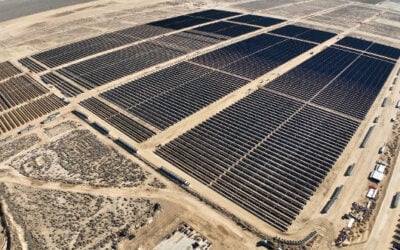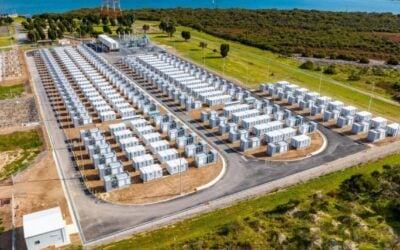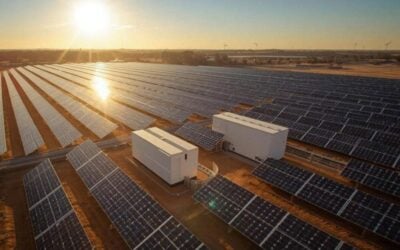The battery’s design has undergone some changes since it was first announced. The earliest design is pictured on the left, the final design on the right. Image: Enphase.
Enphase has confirmed that its AC battery, now available for installers to order in Australia and New Zealand, is priced in the region of AU$1,150/kWh (US$838/kWh), as originally announced last October.
The company finally put the long-awaited device onto the market at the beginning of last week, with orders expected to be fulfilled from August. After first revealing it was developing the battery back in October 2014 for launch into North American, European and Asia-Pacific markets, Enphase announced a year later that it would be first available in Australia and New Zealand.
“The previously announced pricing remains accurate for the Australian market, though final pricing is determined by the installer. We believe that the pricing of the Enphase system is better than competitive offerings, and provides an attractive entry point for customers looking to add storage to their PV,” Raphael Hitzke, Enphase senior product marketing manager, told Energy-Storage.News.
Enphase wants to make the modular lithium-ion battery a key part of its home energy management solutions going forward, especially in conjunction with the Enphase Enlighten cloud-based energy management platform.
Try Premium for just $1
- Full premium access for the first month at only $1
- Converts to an annual rate after 30 days unless cancelled
- Cancel anytime during the trial period
Premium Benefits
- Expert industry analysis and interviews
- Digital access to PV Tech Power journal
- Exclusive event discounts
Or get the full Premium subscription right away
Or continue reading this article for free
Using a lithium iron phosphate battery chemistry safety tested by TUV Rhineland, the battery comes with 10-year warranty and unlike many of its rival’s devices, is AC coupled, rather than DC. Company executives including CEO Paul Nahi and co-founder and CTO Raghu Belur have also said that the sizing of the battery, holding 1.2kWh storage is another factor making it “unique” in its level of modularity, meaning homeowners can simply add as many batteries as they need to their system.
Modular design and AC architecture
Enphase claims the battery has a 96% round-trip efficiency and can be cycled twice per day. Prismatic battery cells are supplied by Japan’s Eliiy Power.
“One person can install a single Enphase AC Battery in about 30 minutes, while competitive battery offerings are four times as heavy, require extra equipment, and can take two people up to two days to install,” Hitzke said.
Hitzke said the battery’s design as an AC device fits the company’s philosophy on home energy. Rival Tesla’s Powerwall is DC coupled.
“…Our focus is on an all-AC architecture because it is simpler, safer and it provides the lowest cost of energy over the life of a system. This applies also to the AC Battery,” Hitzke said.
“It can be connected directly to the main panel without the added expense of an extra inverter like those found with a DC-coupled battery. AC-coupling uses standard AC household wiring, making for a quicker and easier installation, and it also allows an easy retrofit to existing solar installations.”
Enphase installation at a crocodile park, Australia. Image: Enphase.
US and European rollouts to come
The apparent delay in getting the product to market was a necessary part of the product’s design cycle, Hitzke said, referring to more than just the AC battery’s housing, which has undergone several cosmetic changes since late 2014.
“There is a great deal of complexity in such a system, and reducing that complexity to create [an integrated home energy] solution that is easy to install and use takes time.
“Batteries are just a single part of a storage system, and by themselves, batteries can’t do anything. Customers still need the inverter/power electronics and networked software to make them a complete storage solution, and Enphase is delivering a complete energy management system that combines generation, storage, control, and management in one fully integrated package.”
Finally, Hitzke reiterated the attractiveness of the Australian and New Zealand markets for energy storage and solar due to conditions such as falling feed-in tariffs and high energy prices before revealing in brief the AC battery’s expected launch itinerary elsewhere.
“We will launch our AC Battery in the US in late 2016, followed by a rollout in select European markets in early 2017.”
The company has not been alone in spying the early potential of Australia in particular, with Tesla and others also seeing it as an attractive residential market for PV-plus-storage. However Tesla recently came in for some criticism from an Australian solar industry veteran, installer Nigel Morris of Roofjuice, who said that Tesla’s announcement of US$3,500 wholesale prices for Powerwall had led to some customer confusion over correct pricing.





